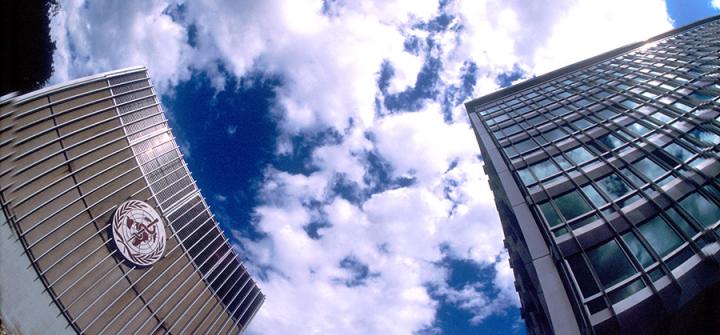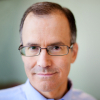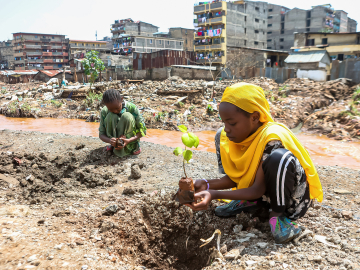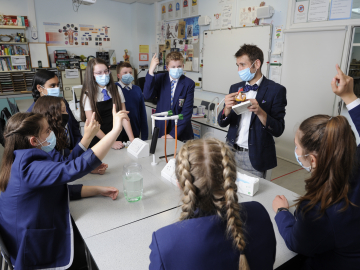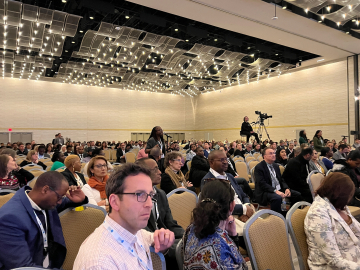Culture Change: WHO DG Candidate Sania Nishtar’s Q&A, Part II
A focus on core priorities, a culture based on accountability and cost effectiveness, and a revamped funding process for WHO are some of the key changes Sania Nishtar says she would undertake if elected as Director-General of the WHO.
In this second installment of a 4-part Q&A with GHN, Nishtar says she has “the ability to accelerate reforms, break silos and speak truth to power … leading on hard issues and making changes in WHO accordingly.” Progress on these fronts will enhance WHO’s ability to secure sufficient funding, according to Nishtar. “Regaining donors’ trust through improved transparency and better results alongside cost containment should make it possible to secure predictable and potentially multiyear commitments,” she says.
What would you change about WHO?
My overall objective is to reclaim WHO’s primacy and ensure that it has the world’s trust as its lead health agency.
There are a number of things I would like to change. First, as is outlined in my Vision explicitly, I will focus WHO on its core roles rather than spreading it thin. For example, WHO needs to be an effective steward in health emergencies and needs to be recognized for its impartial and evidence-based normative and technical role.
I [also] will usher in a new leadership paradigm where WHO leads by appreciating better the value of comparative advantage and through building partnerships where it becomes a force multiplier by playing its normative role.
In terms of management, I will drive a culture of results, transparency and accountability. Having created organizations of my own, I consider these are crucial attributes.
I [also] would like to change the culture in the way it plays its technical role and responds to member states’ needs, which is why I have placed emphasis on the importance of south-south collaboration and the notion of the Director-General’s roundtables. Through the latter, I envisage taking a lead to convene stakeholders in response to member state requests so that decisions and actions are taken in a timely manner.
WHO has an important political role. During the era of the SDGs, the new WHO DG has to make many overarching changes. For example, WHO must now learn to operate intersectorially to influence actors outside of the health sector. The DG in particular must make a strong case to heads of state when it comes to promoting UHC [universal health coverage] and IHR [International Health Regulations] implementation. I also see “political roles” as including the ability to accelerate reforms, break silos and speak truth to power, and I am perfectly capable of playing these roles, leading on hard issues and making changes in WHO accordingly.
As you may have noticed, I continue to stress the importance of value for money, transparency and cost-efficiency approach. WHO needs a new resource mobilization strategy backed by appropriate communication and advocacy tools. In my vision for a new WHO, I have also outlined new innovative approaches to financing.
And finally, the organization’s governance has to become more efficient. A number of reforms are underway, which I will deepen and accelerate, and will in addition focus on overcoming the central systemic constraints, which have hampered WHOs ability to deliver.
With WHO’s budget specifically, how would you go about fixing that? That would require a lot of countries to buy in and really support that.
There are two sets of issues. First, there is an over reliance on a few donors in an uncertain political environment. And secondly, the high level of earmarking in WHO’s budget does not allow the organization to be proactive or priority driven. So how do you deal with these issues? I will embark on bringing to the table for member states approval, a new resource mobilization strategy. I will diversify the donor base and prioritize assessed, rather than voluntary contributions. I regard this crucial for enabling more strategic use of resources, better investments for capacity building to respond to emergencies, as well as longer term attention to the SDGs.
My vision envisages financing innovations as part of the broader WHO strategy to mobilize funding for health. I will explore the possibility of a Solidarity Financing framework to provide organizations with details on ways to charge and channel voluntary micro-levies to support WHO’s assessed contributions. This will require scrupulous attention to conflict of interest and other safeguards. I have signaled intent to explore the potential of direct funding appeals to mobilize funding from individuals, and leverage the potential of philanthropy. I will fast-track WHO’s prequalification process so that it can tap into climate change funds and will make better use of the “geographically dispersed offices” model.
I will also pursue many other options to make resources available for health more broadly, by ensuring that WHO become a force multiplier through timely policy and norm setting. I will set up a taskforce of relevant stakeholders and experts to seek guidance on maximizing the potential of innovative approaches to address the resource gap at WHO.
Regaining donors’ trust through improved transparency and better results alongside cost containment should make it possible to secure predictable and potentially multiyear commitments. This will also entail a number of strategic measures, such as governance reform, stepping back in certain areas where other agencies have a comparative advantage, tapping human resources in WHO Collaborating Centers more effectively, dealing with corruption, reducing duplication across the three levels of the organization, and utilizing the technical expertise outside of WHO more actively, for efficiency and effectiveness in the provision of technical cooperation.
Critically, financing and efficiency go hand in hand; if health systems are efficient, and leakages and pilferages from the system are plugged, more resources will be made available for health and the financing challenge would be mitigated.
Read other installments of Global Health NOW’s 4-part Q&A with Sania Nishtar here.
This interview has been edited for clarity and length.
Join the thousands of subscribers who rely on Global Health NOW summaries and exclusive articles for the latest public health news. Sign up for our free weekday enewsletter, and please share the link with friends and colleagues: Subscribe to GHN
WHO Headquarters, Geneva, Switzerland ©WHO/P. Virot

